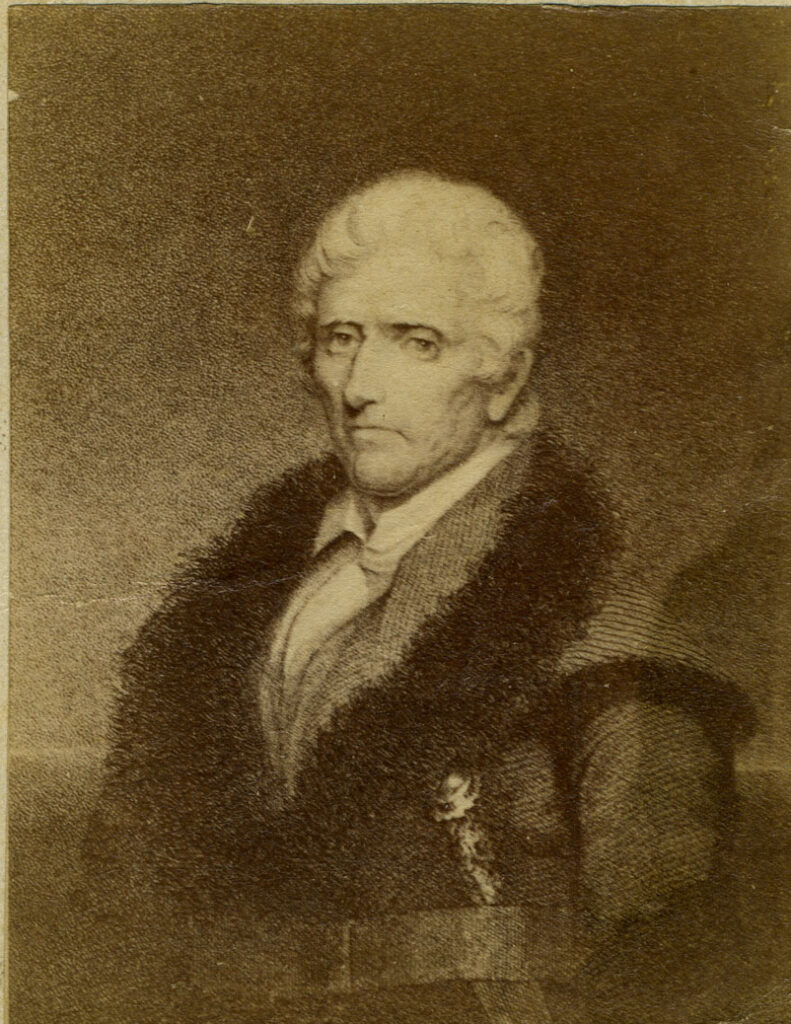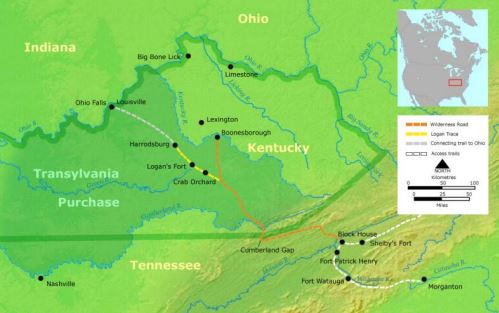Section #2 - A new Constitution is adopted and government operations start up
Chapter 17: America’s Westward Expansion Picks Up Momentum
1775 Forward
A New “Colony Of Transylvania” Is Founded
Throughout the Colonial era, the vast majority of Americans live within 125 miles of the Atlantic coast, east of the Appalachian Mountains “barrier,” which runs 1500 miles from Newfoundland and Massachusetts, southwest across 17 states into Georgia and Alabama.
Some, however, turn their gaze westward, across the mountains, to land occupied by Indigenous tribes and claimed by the British crown.
Many of these are wealthy speculators, aware of the profits to be had in buying and selling land. Their vision lies in founding corporations similar to those associated with the original colonies – the Virginia Companies of London and Plymouth, the Massachusetts Bay Company, the Dutch East Indies – and then reaping the profits that follows.
One such venture materializes in 1774, when a wealthy judge from North Carolina, James Henderson, founds the Transylvania Company. His vision lies in a new “14th Colony” of some 20 million acres lying in the southwestern half of what becomes Kentucky.
On March 14, 1775, Henderson signs the “Treaty of Sycamore Shoals,” buying this land from the Cherokees. He thinks his purchase will be declared legal – which won’t be the case – and proceeds to generate profits by selling plots to prospective settlers. He then sends his hired explorer, Daniel Boone, to facilitate their movement west.
1775 Forward
Daniel Boone Establishes The State Of Kentucky

Boone is a Quaker by birth, who grows up in western Pennsylvania, in close contact with the Lenape (Delaware) tribe, and then moves with his family to North Carolina, where he earns his reputation as a “backwoodsman.” He makes his living as a hunter and trapper, and begins in 1767 to explore Kentucky. James Henderson learns of Boone’s prowess and signs him on with the Transylvania Company.
The main challenge Boone faces in this trek is the Appalachian range. It is a formidable natural boundary, rising over two miles above sea level in places, and sprouting dense woods throughout most of its ridges and valleys.
But Boone is already familiar with a depression known as the Cumberland Gap, and a path through it that will become known as the Wilderness Road — a well-travelled route the tribes have used for generations. In early 1775 he guides some thirty pioneers over this path to the Kentucky River, where he founds the settlement of Boonesborough (near Lexington).

In May 1775 Henderson gathers roughly one hundred settlers there for a three day convention aimed at writing a formal constitution for the colony. The result of this is the Transylvania Compact, a document which Henderson tries repeatedly to get approved by the Assemblies of both Virginia and North Carolina.
In December 1778, with the Revolutionary War underway, Virginia denies Henderson’s claim, while awarding him a 12 square-mile land parcel along the Ohio River. This ends his plan for the 14th Colony, Transylvania.
However, the die has already been cast for settlers to flow west across the Wilderness Road.
Other homesteaders follow behind, and by 1800, the Census reports a total of 387,000 American living in new Territories, west of the Appalachian Mountains. Roughly one in five are African slaves.
American Population Living West Of The Appalachians In 1800 (000)
| All Territories | Kentucky | Tennessee | Ohio | Indiana | Mississippi |
| 387,000 | 221,000 | 106,000 | 45,000 | 6,000 | 9,000 |
Boone himself continues to live in the town bearing his name between 1775 and 1779, and then in other homes across Kentucky, North Carolina, Virginia, Louisiana and Missouri over the rest of his life. During the Revolutionary War, he serves as Lt. Colonel of the Fairfield Militia, seeing action in Ohio and Kentucky. His second son, Israel, is killed on the battlefield.
After the war, he is elected to the Virginia Assembly, representing the land it will claim until Kentucky becomes a state in 1792. He becomes a vigorous but unsuccessful land speculator, and, according to legend, accompanies an expedition which reaches west to the Yellowstone River in 1814, at age 82 years. He dies in 1820 of natural causes in Defiance, Missouri, and is ultimately laid to rest in Frankfort, Kentucky.
His presence is immortalized in tree carvings – “D. Boon kilt a bar here” – and in American folklore. The author, James Fennimore Cooper, bases his 1826 novel, The Last of the Mohicans, on two of Boone’s daughters being kidnapped by Indigenous people and Lord Byron references him in an epic poem.
But his lasting legacy will be as the frontiersman who initiated America’s westward expansion.